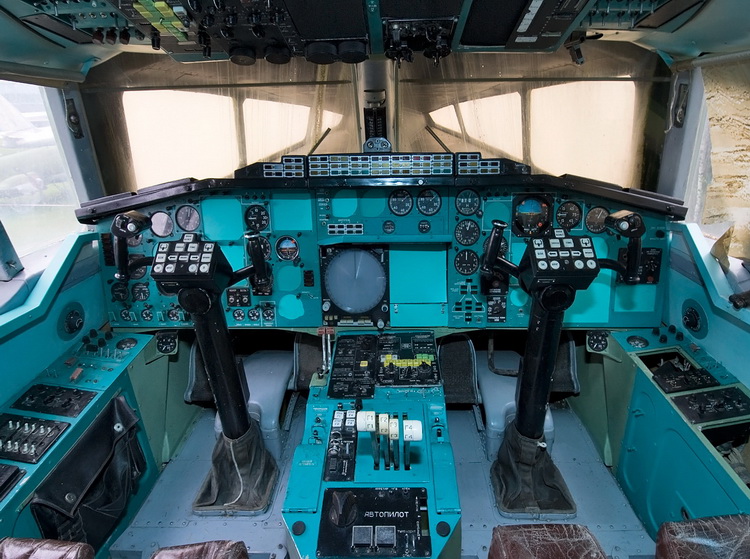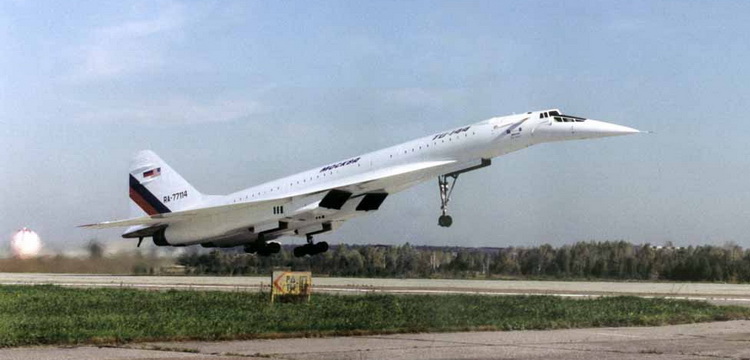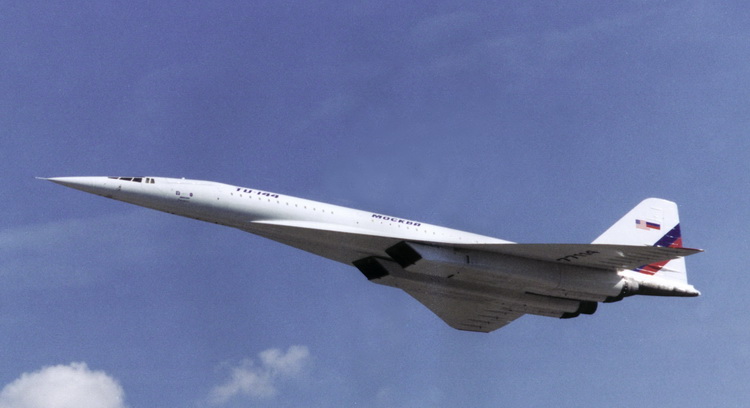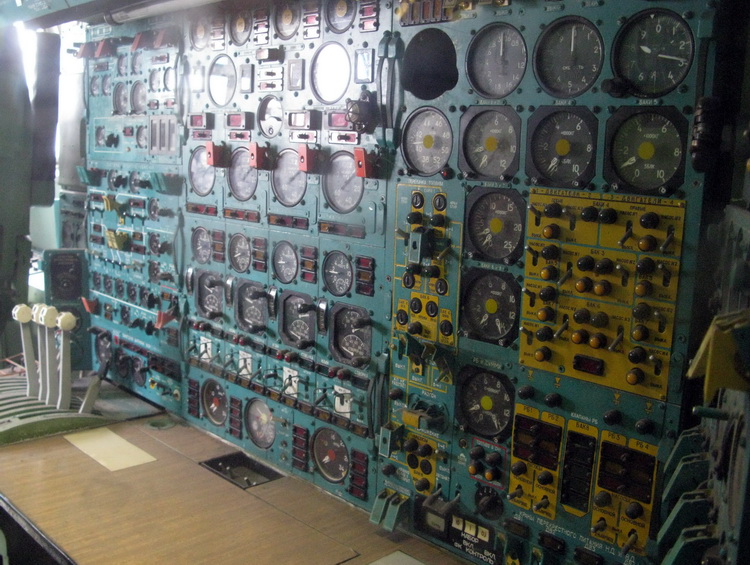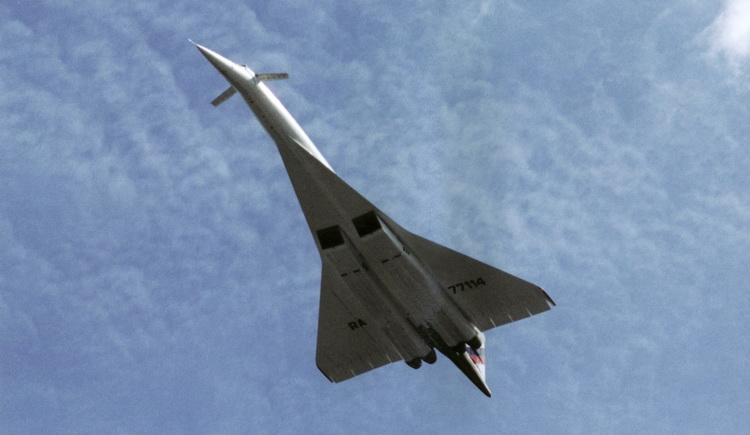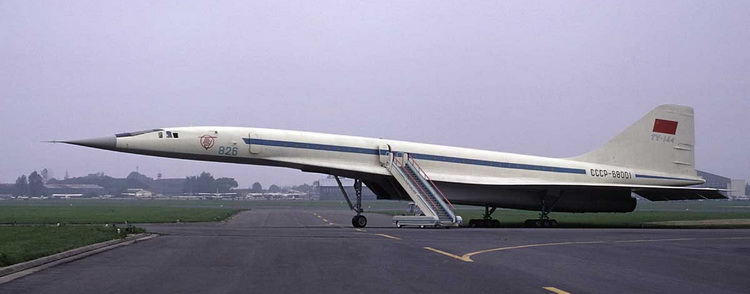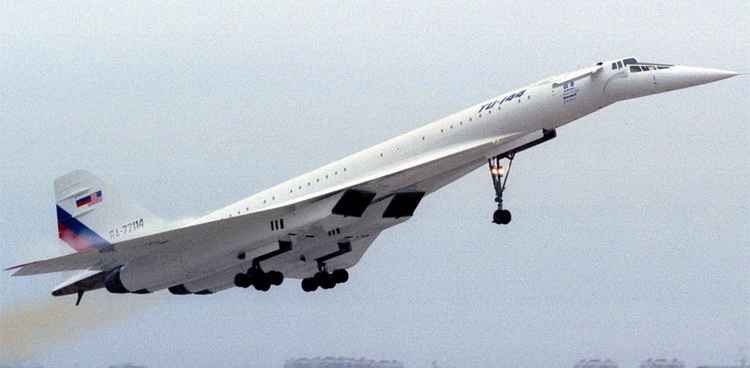TUPOLEV TU-144 SUPERSONIC AIRCRAFT
HISTORY INFORMATION PICTURES AND FACTS
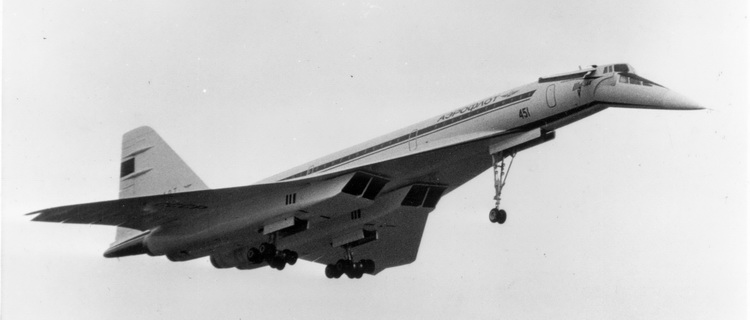 |
tupolev tu-144 supersonic aircraft
TUPOLEV TU-144 77102 1973 Paris Air Show Crash Video
The Tupolev Tu-144 NATO name: Charger was the first supersonic transport aircraft (SST) in the world, and remains one of only two SSTs to enter commercial service, the other being ConcordeThe design, publicly unveiled in January 1962, was constructed under the direction of the Soviet Tupolev design bureau, headed by Alexei Tupolev. The prototype first flew on 31 December 1968 near Moscow, two months before the first flight of Concorde. The Tu-144 first went supersonic on 5 June 1969, and on 15 July 1969 became the first commercial transport to exceed Mach 2.
A Tu-144 crashed in 1973 at the Paris Air Show, delaying its further development. The aircraft was introduced into passenger service on 1 November 1977, almost two years after Concorde. In May 1978, another Tu-144 (an improved version, named Tu-144D) crashed in a test flight while being delivered, and the passenger fleet was permanently grounded after only 55 scheduled flights. The aircraft remained in use as a cargo plane until 1983, by which point a total of 102 commercial flights had been completed. The Tu-144 was later used by the Soviet space programme to train pilots of the Buran spacecraft, and by NASA for supersonic research.
The Soviet government published the concept of the Tu-144 in an article in the January 1962 issue of the magazine Technology of Air Transport. The air ministry started development of the Tu-144 on 26 July 1963, 10 days after the design was approved by the Council of Ministers. The plan called for five flying prototypes to be built in four years, with the first aircraft to be ready in 1966.
Despite the close similarity in appearance of the Tu-144 to the Anglo-French supersonic aircraft, there were significant differences in the control, navigation and engine systems. In areas such as range, braking and engine control, the Tu-144 lagged behind Concorde, but aerodynamics of the Soviet aircraft was better. While Concorde utilized an electronic engine control package from Lucas, Tupolev was not permitted to purchase it for the Tu-144 as it could also be used on military aircraft. Concorde's designers used the fuel of the airliner as the coolant for air conditioning the cabin and the hydraulic system. Tupolev installed additional equipment on the Tu-144 to accomplish this, increasing the weight of the airliner.
Alexei Tupolev continued to work to improve the Tu-144 with upgrades and changes were made on the Tu-144 prototype. While both Concorde and the Tu-144 prototype had ogival delta wings, the Tu-144's wing lacked Concorde's conical camber. Production Tu-144s replaced this wing with a double-delta wing including conical camber, and they added a simple but practical device: two small retractable canard surfaces, one on either side of the forward section on the aircraft, to increase lift at low speeds.
Moving the elevons downward in a delta-wing aircraft increases the lift, but also pitches its nose downward. The canard cancels out this nose-downwards moment, thus reducing the landing speed of the production Tu-144s to 315–333 km/h (196–207 mph; 170–180 kn), still faster than that of Concorde. The NASA study lists final approach speeds during Tu-144LL test flights as 315–335 km/h (196–208 mph; 170–181 kn), however these were approach speeds exercised during test flights specifically intended to study landing effects at maximum possible range of speeds, regardless of how hard and stable the landing can be. As to regular landings, FAA circular lists Tu-144S approach speed as 329 km/h (204 mph; 178 kn), as opposed to Concorde's approach speed of 300 km/h (190 mph; 160 kn) 162 kn (300 km/h), based on the characteristics declared by the manufacturers to Western regulatory bodies. It is open to argument how stable the Tu-144S was at the listed airspeed. In any event, when NASA subcontracted Tupolev bureau in the 1990s to convert one of the remaining Tu-144D to a Tu-144LL standard, the procedure set by Tupolev for landing defined the Tu-144LL "final approach speed... on the order of 360 km/hr depending on fuel weight." Brian Calvert, Concorde's technical flight manager and its first commercial pilot in command for several inaugural flights, cites final approach speed of a typical Concorde landing to be 287–296 km/h (178–184 mph; 155–160 kn). The lower landing speed compared to Tu-144 is due to Concorde's more refined design of the wing profile that provides higher lift at low speeds without degrading supersonic cruise performance – a feature often mentioned in Western publications on Concorde and acknowledged by Tupolev designers as well.
The Tu-144S went into service on 26 December 1975, flying mail and freight between Moscow and Alma-Ata in preparation for passenger services, which commenced on 1 November 1977.
The passenger service ran a semi-scheduled service until the first Tu-144D experienced an in-flight failure during a pre-delivery test flight, crash-landing, on 23 May 1978 with two crew fatalities. The Tu-144's 55th and last scheduled passenger flight occurred on 1 June 1978. An Aeroflot freight-only service recommenced using the new production variant Tu-144D ("D" for Dal'nyaya – "long range") aircraft on 23 June 1979, including longer routes from Moscow to Khabarovsk made possible by the more efficient Kolesov RD-36-51 turbojet engines, which also increased the maximum cruising speed to Mach 2.15. Including the 55 passenger flights, there were 102 scheduled flights before the cessation of commercial service. Early flights in scheduled service indicated the Tu-144S was extremely unreliable. During 102 flights and 181 hours of freight and passenger flight time, the Tu-144S suffered more than 226 failures, 80 of them in flight. (The list was included in the Tu-144 service record provided by the USSR to BAC-Aérospatiale in late 1978, when requesting Western technological aid with the Tu-144, and probably incomplete). A total of 80 of these failures were serious enough to cancel or delay the flight. After the inaugural flight, two subsequent flights, during the next two weeks, were cancelled and the third flight rescheduled. The official reason given by Aeroflot for cancellation was bad weather at Alma-Ata, however when the journalist called the Aeroflot office in Alma-Ata about local weather, the office said that the weather there was perfect and one aircraft had already arrived that morning. Failures included decompression of the cabin in flight on 27 December 1977, and engine exhaust duct overheating causing the flight to be aborted and returned to the takeoff airport on 14 March 1978. Alexei Tupolev, Tu-144 chief designer, and two USSR vice-ministers (of aviation industry and of civil aviation) had to be personally present in Domodedovo airport before each scheduled Tu-144 departure to review the condition of the aircraft and make a joint decision on whether it could be released into flight. Subsequently, flight cancellations became less common, as several Tu-144s were docked at Moscow's Domodedovo International Airport.
Typical flight details Tu-144 pilot Aleksandr Larin remembers a troublesome flight around 25 January 1978. The flight with passengers suffered the failure of 22 to 24 on-board systems. Seven to eight systems failed before takeoff; given the large number of foreign TV and radio journalists aboard the flight, and also some other foreign notables aboard, it was decided to proceed with the flight in order to avoid the embarrassment of cancellation. After takeoff, failures continued to multiply. While the aircraft was supersonic en route to the destination airport, Tupolev bureau's crisis center predicted that front and left landing gear would not extend and that the aircraft would have to land on right gear alone, at the aircraft landing speed of over 300 kilometres per hour (190 mph; 160 kn). Due to expected political fallout, Soviet leader Leonid Brezhnev was personally notified of what was going on in the air. With the accumulated failures, an alarm siren went off immediately after the takeoff with sound and volume similar to that of a civil defense warning. The crew could not figure a way to switch it off and the siren stayed on throughout the remaining 75 minutes flight. Eventually the captain ordered the navigator to borrow a pillow from the passengers and stuff it inside the siren's horn. Luckily, all landing gears extended and aircraft was able to land. The final passenger flight of Tu-144 on around 30 May 1978 involved valve failure on one of the fuel tanks. Limited routes Suggesting low confidence of the Soviet decision-makers in Tu-144 is also the fact that only one route was ever used, with flights limited to once a week, despite having eight Tu-144S certified aircraft by the time passenger service commenced in 1977 and a number of routes suitable for supersonic flights. Booking was limited to 70–80 passengers a flight or less, well below the Tu-144's seating capacity, despite waiting lists. Over its 55 scheduled flights, Tu-144s transported 3,194 passengers, an average of 58 passengers per flight. With officials being acutely aware of the aircraft's poor reliability and fearful of possible crashes, Soviet decision-makers were purposefully limiting flight frequency to the absolute minimum possible that still allowed them to claim regular service, and also were constraining passenger load to minimize the impact and political fallout of a possible crash. |
© AviationExplorer.com - The Website For Aviation Enthusiasts |





